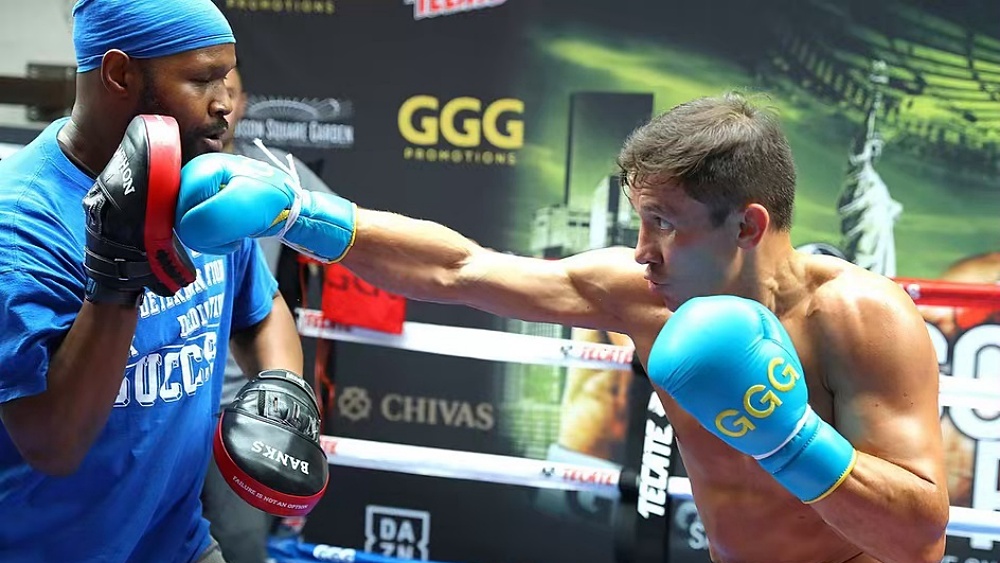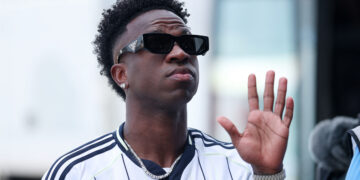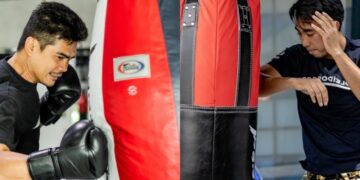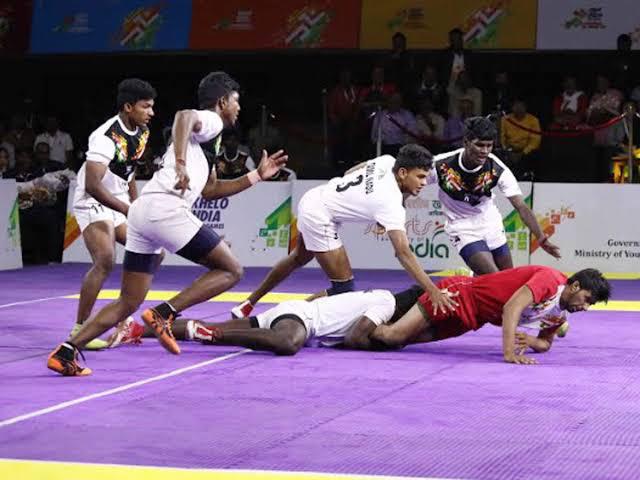The cross is one of the most powerful punches in a boxer’s arsenal, and it also covers more distance than every other type of punch besides the jab. It’s an outside range weapon that can land with more than enough power to leave anyone unconscious. It’s also the safest power punch at your disposal because it’s a straight punch that can be thrown from safe distances, especially when you’re the rangier fighter.
The cross travels in a straight line toward its target, with power generated through the rotation of your foot, hips, and shoulders. Throw a cross without the proper mechanics, and it won’t be much more powerful than a jab.
Why The Cross Matters

The cross is fast, powerful, and efficient, delivering maximum force with minimal exposure, making it perfect for setting up follow-up strikes.
Studies show that the cross allows for a more effective transfer of body weight compared to hooks, meaning you can put more of your weight behind the punch. The straight path of the cross means it not only lands faster than most power punches but also returns to your guard more quickly, minimizing your exposure.
When thrown with enough power, the cross can potentially leave your opponents stunned and open, making it an excellent way to set up other power strikes.
Mastering The Cross
Now that we’ve gone over the basics, let’s break down the tiny tweaks that make your cross feel like a sledgehammer:
1) Foot Pivot: Ground To Glove Torque
Your rear foot is the first link in the power generation chain when throwing a cross. Keep it firmly planted on the floor and push off on it as you pivot on the ball of your foot to create rotational energy that travels into your hips.
A solid pivot on the ball of your foot turns ground force into rotational energy. Here are the different steps involved:
- Start The Punch With Your Rear Foot: Push off the ball of your rear foot, pick your heel off the ground, and spin until your toes point somewhere around 1 o’clock if you’re in an orthodox stance or 11 o’clock for southpaws.
- Activate Your Kinetic Chain: Pivoting as you throw the cross fires up muscles in your glutes and hamstrings, sending the forces generated through your hips into your shoulders. Skipping the pivot can reduce the power in your cross by as much as 40%, according to studies.
You can build the habit by getting into your fighting stance, then lowering your guard and starting to practice your lead and rear foot pivot. Keep going back and forth until the movement feels natural. Bring your guard up once you’re comfortable, and eventually start practicing your jab and cross slowly.
2) Hip And Shoulder Sequencing: Whip-Like Snap
Turning our hips and shoulders generates torque that’s transferred to your cross, much like the torque generated by a whip is transferred to its tip. Your hips lead the dance, your shoulders follow, your arm lags, and your fist snaps into the target.
Here’s what the sequence looks like:
- Rotate your hips toward the target.
- Start rotating your shoulder toward the target immediately after your hips start moving.
- Extend your arm last as you drive your fist into the target.
Advanced boxers generate up to 60 percent more force behind their punches from rotating their torso, compared with novices who throw ‘arm’ punches. Picture your hips, torso, and arms as three connected links in a chain, snapping right after another, not all at once.
Turning your hips toward the target allows you to generate power with the massive muscles in your legs, like your quads and glutes. Drive off your rear leg’s quads as you pivot and engage your glutes as you thrust your hips forward.
Keep your core tight to transfer the torque generated by your lower body without significant energy leaks.
3) Head Position: It’s Not Just For Defense
Tucking your head when throwing punches doesn’t just shield your chin from potential counters; it also stabilizes your spine for stronger rotation, meaning more power.
Here are some important things to keep in mind:
- Keep your chin tucked down while throwing. You want it near your collarbone on impact.
- Keep your eyes on your target to help spot counters.
- It’s okay to tilt your head up to five degrees when throwing, but anything more than that will compromise your balance and power generation.
4) Weight Transfer: Mass In Motion
As we mentioned earlier, the cross allows for more transfer of your weight into the punch, which is why throwing it with proper mechanics makes it a lot more powerful than only using your arm.
Here are the main things to remember:
- Start with your feet hip-width apart and your knees slightly bent, ensuring proper energy transfer starts with a balanced stance. (Remember, you can’t generate full power when you’re off balance, and it leaves you open to counters.)
- Shift your weight to your front foot as you pivot. You want about 60% of your weight on your front foot at the moment of impact.
- Bring your hand back to your guard to protect your face and restore 50/50 weight distribution between both legs.
5) Hand Path And Fist Alignment
Your cross must be delivered with proper mechanics to maximize the power it lands with:
- Tuck your elbows slightly so your punch travels in a straight line toward the target.
- Make contact with your index and middle knuckles. Doing so aligns them with your forearm, which optimizes force transfer.
- Tighten your fist right before impact by contracting your forearm to stabilize your wrist. Tightening up your fists earlier slows down your punch, which reduces the power it lands with.
Small Tweaks, Big Blows
You don’t have to be the strongest person alive to pack serious power in your cross. All you have to do is learn how to generate power from the ground up. The key to generating knockout power is performing all the above-mentioned steps in one fluid motion. Remember, practice, practice, and more practice is the only way to build that kind of muscle memory.
You may also like:
Boxing’s Emergence: What Is The Kazakhstan Style Of Boxing?
In striking arts, size and reach are important tools, but they don’t guarantee success. When facing a smaller opponent, the challenge often lies in their speed, mobility, and ability to slip into range before you…
Kazakhstan is home to famous boxing and fighting icons like Gennadiy “GGG” Golovkin and Shavkat Rakhmonov. The country is known for its rich culture and heritage, producing some of the toughest and fiercest warriors on…
Head shots lead to some of the most amazing finishes in combat sports such as Boxing, Muay Thai, or Mixed Martial Arts, but body shots accomplish the same goal in a subtler way. A well-executed…
Boxing is a sport where fighters develop not only physical skills but also distinct personalities and philosophies in the ring. Over time, certain approaches to fighting have become so recognizable that they’re referred to as…
Have you ever watched the fight winner declared and thought, “Wait… how did they win that?” Welcome to the sneaky, strategic, and often misunderstood world of stealing rounds. It’s not cheating. It’s not luck. It’s…
You’ve probably seen Floyd Mayweather slip punches in a boxing match like he’s Neo in the Matrix as he hands out boxing clinics. The Philly shell is the foundation of Mayweather’s airtight defense, rarely leaving…
Brazilian Jiu-Jitsu is known for its highly technical ground game, but the truth is every match begins standing. Whether it’s a competition setting, a self-defense scenario, or an MMA fight, learning how to bring your…
We’ve all been there before, that moment when life throws a spinning heel kick to your face that you didn’t see coming. It doesn’t take much to make that feeling even worse. Bills pile up,…
In a city as fast-paced and high-performing as Singapore, finding time to take care of your health can feel like a luxury. Between juggling demanding jobs, long commutes, and constant digital distractions, our urban lifestyle…
In Brazilian Jiu-Jitsu, facing an unorthodox position like the inverted guard can be overwhelming, especially for newer practitioners or those more familiar with traditional passing sequences. The inverted guard flips the script, quite literally, and…
Many people think ripped muscles, lightning hand and leg speed, and perfect technique are the only things you need to develop knockout power in striking-based martial arts such as Muay Thai, Boxing, and Mixed Martial…
Every Muay Thai fighter will eventually face opponents who present unique challenges based on size, style, and temperament. Two particularly difficult matchups are the smaller opponent and the aggressive opponent. Each one requires a different…



































